|
|
||||
Insurance companies just want to save the world right?An anonymous insurance insider warns the plan is to force people to buy a digital car, and claims the push is so strong we won’t even be able to get insurance for a combustion engine vehicle. It sounds like a conspiracy theory except that insurers themselves admit Big Data from cars is worth a fortune, and they’ve have been lobbying to get your car data out of the hands of the car manufacturers (purely for your own good), and they’re already “involved in negotiations with the European digitalization and data protection manager”. Righto. Just six weeks ago, a Managing Director of Allianz insurance said he wants to track your car data so he can be “your invisible Guardian Angel.” Creepy, yes? Wouldn’t you love to have your insurer, the police and the IRS as your back seat drivers?
According to GeoffBuysCars an insider at a large European insurance company has spilled the beans. Being a car lover himself, the insider wants to warn the world that the plans are well advanced. The insurance giants want to collect all your data as you drive so they can adjust the premiums accordingly and instantly. If you drive a bit too fast, it’ll cost you (especially when 20-mile-an-hour-zones spread to everywhere). Your EV will report your offenses to the police and the insurance company. How good with that be? GeoffBuysCars has translated the insider report “doing the rounds of Europe” into English (hear him below). I’ve searched for any news reports or confirmation and of course, found almost nothing at all about the insider. But a story from Allianz on October 17th suggests he’s right on the money. It’s a new era of Big Data from cars:Allianz seem awfully very excited about the tidal wave of big car data that is about to arrive, which they warn was being “monopolized” and “hoarded” (just not by them). Luckily for us, they lobbied the EU and now there’s a new law. Insurers are salivating at the thought of getting their hands on this data, and Big Bankers, and Big Bureaucrats are hardly going to stand in their way are they? They want that data too: Doorway to a new era in automotive insurance (Allianz, Oct 17, 2023)As the world in which we live becomes increasingly digital, every day, more and more data is being generated, monitored and analyzed. It’s also being transferred and monetized, and in some cases, monopolized. The power and insights that can be drawn from data is not lost on corporations and industry players, and while data can improve the competitive position of those with access, the hoarding of it can stifle competition and progress. Connected vehicles already churn out several terabytes of data per day, but this is nothing compared to what’s to come – an estimated 30 terabytes of data per day by 20251. This is the data equivalent of over 7,000 high-definition movies2! In today’s cars, hundreds of high-tech sensors record everything from driving behavior to fuel consumption and seatbelt status. …a coalition of parties including insurers, leasing companies, and repair shops have been lobbying the European Commission to intervene when it comes to accessing valuable vehicle data. All the terabytes of car data was owned and “hoarded” by the car manufacturers like VW and Volvo but the new EU Data Act “gives that back to the car owner”. Which all sounds good, but wait half a nanosecond for the insurance companies and government agencies who will “offer discounts” to people who sign away their data so they can be spied on legally. Obviously the skiing billionaires at Davos won’t need the discount, so only the riff raff and the poor will be tracked every second of their driving day. ..the new EU Data Act will be a game changer, putting car owners back in the driver’s seat when it comes to who accesses their vehicles’ data. “This move is an important first step in order to enhance data sharing and competition, and for us as insurers to be able to implement new and improved products, claims processes, and effective prevention measures for our customers,” says Christoph Lauterwasser, Managing Director of the Allianz Center for Technology. “We are about to enter a new era in the world of automotive insurance and solutions, thanks to the power of data from connected cars.” Imagine being able to sell that data? Say, the insurers give you the discount and collect the bytes and then the tyre guys, the media, the phone companies, the police, the FBI, the shopping centres, the electricity companies and the CCP are happy to pay… The Government will of course, just offer you a discount on your registration if you agree to be tracked. “I worked in the IT department of a very large insurer…”Hear his words. They are already setting this up… it will be connected to police, insurance and national security agencies…. in cooperation with Google and Microsoft. Since the Luton airport fires, my favourite car commentator is GeoffBuysCars. This is a depressing story, but forewarned is forearmed. Get the word out so we can cut them off at the pass… UPDATE: The insider letter was posted days later here. … Partial transcript cobbled together —A mix of the anonymous insider and Geoff’s interjections: Keep reading → Sorry we ran out of Unthreadeds for a while. Did they forget to mention a clean green planet is full of steel transmission lines?Recently the International Energy Agency (IEA) told the world off for not preparing the Earth for the transition they want to force upon us. Apparently, we should have paid attention and built the right grid and now, due to our laziness, we will have to rush in another 80 million kilometers of interconnectors by 2040. Just like that. All the high voltage lines we built in the last century, we have to build again in the next 17 years. Remember, it’s not their fault that renewables need far more land, more space, more back up and more infrastructure — it’s our fault we didn’t build a world ready for their holy energy. Those sacred wind and solar gifts cannot be bestowed upon us! We are unworthy: IEA Lack of ambition and attention risks making electricity grids the weak link in clean energy transitionsFirst-of-its-kind global study finds the world must add or replace 80 million km of grids by 2040, equal to all grids globally today, to meet national climate targets and support energy security.Notice how these changes “are essential” girls and boys, and you should have paid for them already. It’s only half a trillion dollars a year for the next 7 years… Achieving all national climate and energy goals will require adding or replacing 80 million kilometres of power lines by 2040 – an amount equal to the entire existing global grid – according to a detailed country-by-country analysis carried out for the report. Major changes to how grids operate and are regulated are also essential, while annual investment in grids, which has remained broadly stagnant, needs to double to more than USD 600 billion a year by 2030. Issues are already emerging. The report identifies a large and growing queue of renewables projects waiting for the green light to be connected to the grid, pinpointing 1 500 gigawatts worth of these projects that are in advanced stages of development. This is five times the amount of solar PV and wind capacity that was added worldwide last year. Just bill it to the wind and solar investors, says Jo Nova, and make them pay to put the lines underground so they don’t pollute the forests and farms and start fires. As Henry Geraedts said in the Financial Post — 80 million kilometers by 2040 is is enough to wrap around the globe 2,000 times. It’s all so utterly improbable. And as Australian farmers say when AusNet wants to build interconnectors across their farms: Tell the children they’ve been lied to. The Green future is an industrial wasteland of concrete and steel built to line the pockets of billionaires and bankers. Photo: Interconnectors by Frans Berkelaar
In the last couple of weeks a New Zealand whistleblower came forward with detailed, but anonymized data showing that certain batches of the experimental you-know-what, were associated with shockingly high mortality rates. As this news started to spread, the government could have responded to correct or explain this, instead they arrested him, thus accidentally verifying that the data he showed was not wrong, but real. His crime apparently was not faking-up the data, but “accessing a computer system for dishonest purposes” which seems like a very strange crime given that, as he describes it, he was paid to work with the data, and the results of public health data is — in a free society — supposed to be public. In the world we thought we lived in, we would assume that the NZ government would already know and track the mortality of all the batches they forced the citizens to take. Unless they were grossly incompetent or inherently corrupted by, hypothetically say, large multinational entities earning a hundred billion dollars — authorities would have the real death rates at their fingertips, surely? So if he faked the data, or misinterpreted it, or he made an honest but calamitous error with the spreadsheet, then surely the government could have told us that? Perhaps there is some legitimate explanation (for example if the worst batches went to nursing homes with 104 year old patients at deaths door, or were only given to wards of Stage 4 cancer patients). The Minister of Health could have explained that. But check these numbers: The batch labelled “1” here had a death rate of 21%. Out of 711 injections, 152 people died. (Apparently over a long timespan, so some of these deaths are months afterwards.) This needs explaining. The ten worst batches:Batch 62, which went out to 18,000 people was associated with an extraordinary 4.6% death rate. Does the Minister know the average age of these people, or their risk factors? If not, why not? Isn’t this one of the most important questions in the country today? In this short video below, Barry Young is interviewed by Liz Gunn, and referred to as “Winston Smith”. The man is a hero. In court he received a standing ovation from the packed public gallery. This interview was a few days ago, before his name was revealed and he was arrested.
The New Zealand Ministry of Health says that only four people have died because of vaccination. Steve Kirsch has analyzed the data, and claims it (and other data he has) shows an overall mortality rate of around 1 in 1,000 doses. He calls for people to prove he is wrong and points out no nation has ever released their record-level data publicly, which would be easy to do if they wanted to prove their programs were safe. This new whistleblower data comes from the “Pay per dose” program in New Zealand and applies to about 4 million of the 12 million total doses. While one critic claimed these were doses for people in nursing homes, Kirsch claims that nearly 900 million days of data in people under 60 in the dataset. Kirsch also says the mortality peaks around six months after the last injection. He pointedly asks why other countries don’t release their record-level data (which could show the injections are safe, right?) I don’t know if Steve Kirsch is right, but I do know the governments are acting guilty. Keep reading →  Image by Donna Kirby from Pixabay University degrees aren’t what they used to beAfter years of universities turning out smug self-obsessed graduates of Woke ideology, Big Business has realized they might be better off hiring people with experience in the real world instead. They are also doing their own testing — with 2 out of 3 setting their own test assignments for candidates. This year more than half of the 800 employers surveyed had already dropped bachelor degree requirements for at least some of their roles. It must have worked out, because next year almost all of those same companies plan on dropping the requirement for even more roles. That looks like a trend… This surely must be ringing some warning bells in a few Ivory Towers? Fewer students, means less income, less influence, and fewer alumni: How the college degree lost its value: Nearly half of US companies plan to ax Bachelor’s degree requirements – after Walmart, Accenture and IBM led the chargeDailyMail Nearly half of US companies intend to eliminate Bachelor’s degree requirements for some job positions next year, a new survey has revealed. And 55 percent said they’d already eliminated degree requirements this year, according to an Intelligent.com survey of 800 US employers, carried out in November. In October, Walmart eliminated college degrees as a requirement for hundreds of its corporate roles… Intelligent.com suggests that this move will help increase diversity by giving marginalized applicants more of a chance. But employers are conducting their own tests and they’re talking about finding a good fit for their culture. Perhaps what the employers want is a better attitude, not a virtue signalling Marxist? Or perhaps, since universities don’t like to fail anyone anymore, employers have to run tests to assess the merits: 80% of hiring managers favor experience over education in job applicants “Assessments are important for many jobs, even if a student seems to have a relevant degree,” Gayeski says. “Employers use assessments to get a handle on whether candidates will be a good fit for their specific culture or the challenges of a certain job – such as the ability to handle conflict or to take on unfamiliar tasks and take risks. They’re also a way for applicants to demonstrate their interest in a job and how accurately and quickly one can perform tasks.” The majority of test assignments, 81%, take two hours or less to complete. This is what you get when you take a great institution, try to make it fit half the population, and spurn free speech and the pillars of its success. Alas, at the bleeding edge of societies intellectual fashion parades, and in protected government zones, the adulation of academic degrees will continue.
By Jo Nova Joe Biden wants half of all cars to be EV’s by 2030 to stop the storms, but customers have other plans Such is the dour mood in sales yards, it only took three weeks to get nearly 4,000 dealers across the USA to sign on. Their joint letter to Joe Biden informs him electric vehicles are piling up in their sale yards. And even though the prices have been cut and subsidies applied — it’s still not enough. They plead with him to slow down with the EV mandates. Rich Democrats buy EV’s but the poor and middle class can’t afford them, the charging infrastructure is not there and the grids can’t cope. If the price of traditional cars is forced up artificially to effectively subsidize and “meet” the EV Diktat, presumably most customers just won’t buy new cars at all. Right now in the EV vision, sales are supposed to be accelerating: Car Dealers to Biden: EVs Aren’t SellingThe Editorial Board, Wall Street Journal Dealers have a 103-day supply of EVs compared to 56 days for all cars. It takes them on average 65 days to sell an EV, about twice as long as for gas-powered cars. EV sales are slowing though manufacturers have slashed prices and increased discounts. Consumers paid on average $50,683 for an EV in September, compared to $65,000 a year ago. A new study from the University of California, Berkeley’s Energy Institute at Haas finds a “strong and enduring correlation between political ideology and U.S. EV adoption.” About half of EVs registered as of last year were to “the 10% most Democratic counties, and about one-third to the top 5%,” the study notes. This suggests “it may be harder than previously believed to reach high levels of U.S. EV adoption.” From the car dealers: A Letter to the President: Let our customers voices be heard!
With each passing day, it becomes more apparent that this attempted electric vehicle mandate is unrealistic based on current and forecasted customer demand. Already, electric vehicles are stacking up on our lots which is our best indicator of customer demand in the marketplace. Mr. President, no government agency, no think tank, and no polling firm knows more about the automobile customer than us. We talk to customers every day. As retail automotive dealerships, we are agnostic as to what we sell. Our business is to provide customers with vehicles that meet the needs of their budgets and lifestyles. The Inflation Reduction Act offers $7,500 in credits to qualifying households, and it’s still not enough. The EV market share is still growing, but has dramatically slowed in the second half of 2023. Joe Biden wants half of all cars to be EV’s by 2030, but even though EV sales hit a record “high” in the US, the market share is still only 7.9% of new car sales. h/t OldOzzie, Kim, Maurice. Image by Anwarul Quddus Sikder StopTheseThings — a well known Australian blog opposing wind turbines has been suspended from WordPress. Anyone have a contact email? h/t Jock, and Nick C.
All the papers in between 32 and 99% were neutral on the cause of man-made climate catastrophes, but Lynas et al bundled them in with the believer pack and made hay in the global media. This was even though many of the “neutral” papers showed results that didn’t fit the consensus. But who cares about results eh? If an abstract was neutral, it was therefore a “sign” the authors believed — like reading their tea leaves, or laying out the entrails. (Either that or it was a sign scientists who question the dogma get sacked, lose funding, and get uninvited to laboratory barbeques, but, shh! We won’t mention that.) So Lynas assumes that as long as a scientist doesn’t specifically say they disagree, they de facto endorse the “consensus”. Why do people who call themselves scientists even talk about a “consensus”?Obviously if believers had evidence, they’d talk about that instead.
We might as well add up the funding offered to each side of a theory and declare the issue settled. 99% of climate funding is paid to scientists who don’t rock the boat, therefore climate sensitivity on the third rock from the sun is 3.3 degrees… If the opinions of scientists counted in science, we’d just survey them directly anyway instead of conducting seances on abstracts. But when we do, the consensus blows away. Outside the star chamber of the IPCC junkets, half of Meteorologists and two thirds of Engineers and Geologists flatly didn’t agree. There’s nothing remotely like a consensus in the world of science in the hideously complex and immature world of climate prophesies. Those polling results were done in 2017 and 2012, but the results scared the science pollsters so much, they have been too frightened to ask them ever since.
As Kenneth Richards says at No Tricks Zone: 67% Of Scientific Papers Can Be Said To Reject The AGW Hypothesis…Of the 3,000 papers analyzed in Lynas et al., 282 were deemed not sufficiently “climate-related.” Another 2,104 papers were placed in Category 4, which meant either the paper’s authors took “no position” or the position on AGW was deemed “uncertain”…in the abstract. So, exploiting the “if you are not against, you are for” classification bias, Lynas and colleagues decided that the authors of these 2,104 scientific papers in Category 4 do indeed agree with AGW, as what is written in the abstract does not explicitly state they do not agree. Interestingly, if this classification bias had not been utilized and the thousands of Category 4 (“no position” or “uncertain”) papers were not counted as supporting AGW, only 892 of the 2,718 (climate-related) papers, or 32%, could be said to have affirmatively stated they support AGW. So, simply by assuming one cannot divine the AGW opinions of authors of scientific papers by reading abstracts, it could just as facilely be said that 67% (1,826 of 2,718) of climate-related papers reject AGW. As I’ve said before, these junk consensus studies are merely sociological surveys of the purity of government funding: Given the $7 billion in funding from the US government for the 2015 financial year, marked for climate science and clean energy, it is hardly surprising that there are a lot of papers about “climate change” and “global warming”. There are a lot of people studying how big the crisis might be, how to solve the crisis we might be having, and what the effects of this crisis might be (if we are having one). What there is not, are institutions of people specifically tasked to investigate how minor CO2 is, how beneficial it is, or to assess if the Sun controls most of our climate. Around the Western world there is no government funding specifically to audit or find problems with the man-made global warming theory. There are no programs with the sole purpose of finding natural causes to provide the counter arguments ($0). The purity is near complete. Skeptics mostly have to fund themselves. That’s a very high barrier to publication. In a complex science, purity of opinion is a bad sign. REFERENCESDentelski, David, Ran Damari, Yanir Marmor, Avner Niv, Mor Roses, and Yonatan Dubi. (2023) “Ninety-Nine Percent? Re-Examining the Consensus on the Anthropogenic Contribution to Climate Change” Climate 11, no. 11: 215. https://doi.org/10.3390/cli11110215 Lynas, M.; Houlton, B.Z.; Perry, S. Greater than 99% consensus on human caused climate change in the peer-reviewed scientific literature. Environ. Res. Lett. 2021, 16, 114005. [Google Scholar] [CrossRef] Cook, J.; Nuccitelli, D.; Painting, R.; Honeycutt, R.; Skuce, A.; Jacobs, P.; Green, S.A.; Lewandowsky, S.; Richardson, M.; Way, R.G. Reply to ‘Quantifying the consensus on anthropogenic global warming in the scientific literature: A re-analysis’. Energy Policy 2014, 73, 706–708. [Google Scholar] [CrossRef] Cook, J.; Nuccitelli, D.; Green, S.A.; Richardson, M.; Winkler, B.; Painting, R.; Way, R.; Jacobs, P.; Skuce, A. Quantifying the consensus on anthropogenic global warming in the scientific literature. Environ. Res. Lett. 2013, 8, 024024. [Google Scholar] [CrossRef] Cook, J.; Cowtan, K. Reply to Comment on ‘Quantifying the consensus on anthropogenic global warming in the scientific literature’. Environ. Res. Lett. 2015, 10, 039002. [Google Scholar] [CrossRef] Art: Witchdoctors: US CDC
 Paul Hoelen, Mortimer Bay, Hobart, Tasmania UPDATE: I want to see an aurora, but living at 32S in Perth, Australia, this is like hoping to see the NorthernLights in Jerusalem or San Diego. No luck for me tonight, but there was one report from Geraldton 400km north of us (28.7S). Hopefully sometime in the next year during the solar max… A quick note to say a CME just hit Earth, and some people may be able to see an aurora tonight that wouldn’t normally see one. A severe Kp 7 Geomagnetic storm is in progress (BOM estimate). Kp 7 is the bottom end of what is classed as a “severe” geomagnetic storm with Kp 8 and 9 being bigger (and even rarer). Reports on X (Twitter): #AuroraAustralis #Auroraborealis Southern Hemisphere data — BOM 3 day Geomagnetic Indices | Northern Hemisphere: SpaceWeatherLive Keep reading → Add it to the list. A survey of owners of 330,000 vehicles found that EV’s experience 80% more problems than petrol and gas powered cars. So EV’s cost more to fuel, take longer to arrive on long distance journeys. They sometimes burn down ships, destroy airport carparks, and kidnap drivers. They are a national security risk, and a burden on electrical grids. Because they are heavier they create more potholes, wear out tyres faster, increase road noise and air pollution (from tyre particles). They also increase wear and tear on bridges and multistory carparks. EV’s are on the verge of becoming uninsurable partly because near new EV’s may have to be written off after a scratch, and all EV’s need large empty spaces to be stored so they don’t destroy the cars around them. And in the end, they barely reduce national fuel consumption, and no one even knows if EV’s will reduce CO2 emissions. On average, electric vehicles are less reliable than other cars and trucks, Consumer Reports findsBy Tom Kriser, CBC News Electric vehicles have proved far less reliable, on average, than gasoline-powered cars, trucks and SUVs, according to the latest survey by Consumer Reports, which found that EVs from the 2021 through 2023 model years encountered nearly 80 per cent more problems than did vehicles propelled by internal combustion engines. Consumer Reports said EV owners most frequently reported troubles with battery and charging systems as well as flaws in how the vehicles’ body panels and interior parts fit together. The magazine and website noted that EV manufacturers are still learning to construct completely new power systems, and it suggested that as they do, the overall reliability of electric vehicles should improve. Some problems are worse than others: Keep reading → Oh the irony — Green heat pumps and EV’s will need to be curtailed on a Green GridWe’re watching the real time collapse of parts of the “Climate Industry” in on itself. The left eats its own. The EV’s and heat pumps the German government was coercing people to use are so incompatible with unreliable expensive energy, they will be among the first appliances to be restricted in the new clean green economy. The truth is — Solar and wind power can’t power EV’s. In Germany the network regulator is working on ways to limit electricity to hungry EV’s and heat pumps so they don’t crash the grid. The federal grid agency will throttle the charging power so EV’s will get just enough charge for a 50 kilometer trip from two hours of charging. Home owners will be offered a discount if they give control of their chargers to the government. Effectively the rich will charge their car or turn on their heater whenever they want. The poor will “save” €110 to €190 they never needed to spend with their old car or their old heater, and go withou electricity at peak times. EV chargers, heat pumps may be curtailed in Germany as of 2024By Nikolaus J. Kurmayer | Euractiv.com Germany’s residential grid operators will be empowered to restrict the flow of power to heat pumps and electric vehicle (EV) chargers from 2024 in order to preserve the stability of the grid, which is suffering from chronic underinvestment. Did you see what they did there? Renewable energy requires a massive new infrastructure and network build to connect up low density energy collectors. Saying that the grid is suffering “chronic underinvestment” implies this new and unnecessary cost was somehow meant to have been built and paid for already. They blame the grid for not already solving the failures of wind and solar power. This also applies to EV’s and heat pumps. It was obvious they would need more electricity, so this is a belated ploy to blame “investors” effectively for not building the coal and nuclear plants, they weren’t allowed to build, in order to keep the EV’s and heat pumps running… Across Europe, investments into grids are lagging behind what’s needed as the continent embraces heat pumps and electric vehicles. “Waiting time for permits for grid reinforcements are between 4-10 years, and 8-10 years for high voltages,” the European Commission said on Tuesday (28 November) as it unveiled a new Action Plan to accelerate the deployment of electricity grids. “Grids need to be an enabler, not a bottleneck in the clean energy transition,” said Kadri Simson, the EU’s energy commissioner. Blaming the grid is code for “blaming the taxpayer” for not already giving the Green industry all the things it needs so it can make a profit. You will own nothing and feel grateful to get any electricity at all… Australia, this is our future if we keep following Germany. h/t NetZeroWatch Floating rock house image by Reto Scheiwiller | Frozen Jeep by (Joenomias) Menno de Jong
By Jo Nova Something promising across the Tasman Sea
It sounds brilliant, but also like the bleeding obvious. This is what democratic governments are supposed to do, every deal and every day, right? Yet in 2023, it’s seems like such a radical right wing suggestion. So often our governments are serving someone else… The conservatives have their sights set (justifiably) on the The UN’s Pandemic Preparedness Treaty. That’s due to be adopted in theory, next May. However The UN International Health Regulations is due to be sneakily accepted by default on Thursday. Hopefully the new NZ govt can fire off a quick letter to get NZ out of that tomorrow, making Australian and other global leaders look really silly (traitorously stupid) if they don’t. See James Roguski for more on that. New Kiwi Government to Challenge WHO’s Pandemic TreatyA new ‘national interest’ test will consider whether the Treaty limits government decision-making. By Henry Jorn, The Epoch Times The “national interest test” proposed by New Zealand’s newly formed coalition—including the National Party, ACT, and NZ First—will be applied before accepting any “agreements from the UN and its agencies that limit national decision-making and reconfirm that New Zealand’s domestic law holds primacy over any international agreements.” The Pandemic Treaty is one example of a UN agreement. In November 2021, New Zealand and other World Health Organisation (WHO) Member States agreed to establish an Intergovernmental Negotiating Body to draft a Pandemic Treaty. However, following the conclusion of public submissions on the pandemic treaty on Aug. 11, 2022, a common theme (pdf) was a concern that a new pandemic instrument would require “New Zealand to relinquish control of our domestic decision-making processes during a public health emergency of international concern (PHEIC) to the WHO, or otherwise reduce autonomy at the individual or country level.”
Here in Australia, the Foreign Minister says the WHO will have no legal authority to force things on us. (It will only have the right to do sneakery, deception, graft and intimidation, with unbridled help from all our academics, media, and our retirement funds). The Guardian is already campaigning against the new Luxon government, so we know it’s off to a good start. There is hope. hat tip to Mayday. Image by Ondřej Šponiar Our cities are more fragile than we imagineDuring the winter storm called “Elliott” last Christmas, gas pipes came close to freezing in New York. The gas shortages are not just deadly themselves in cold weather, but more of the electrical network is dependent on gas now rather than coal, and therein lies double jeopardy. As the gas crisis escalated, so did the electrical one: at its worst there were “90,500 megawatts of coincident unplanned generation unit outages, derates and failures… “. This was on top of 37,000 megawatts of generation that was already out of service, so 127 gigawatts in toto*. Some 18% of the normal resources of the Eastern Interconnection was missing. At 4:25am on Christmas Eve in North Eastern USA the grid frequency fell to 59.936 Hz, just below the trigger point of 59.95 Hz. If the gas had stopped flowing completely during the big freeze that lasted five days, water pipes would have frozen, and not only would the water stop flowing out of taps, and toilets stop flushing, but pipes would have burst — rendering thousands of apartment blocks and offices unusable, and possibly water damaged too. Somehow, like a disaster movie script — 8.5 million people in New York City would need to be evacuated in the midst of this frozen crisis. They’d need to live somewhere else, while the slow tedious work of repairing and rebuilding the system would take months. Gas networks are far slower to restore than electrical blackouts. Robert Boyce tells how in one gas crisis in Washington State, 35,000 customers lost gas and the gas-company had to send someone out to every customer, firstly to turn off the gas meters, and then later when the line was fixed, they had to send someone out to light the pilot lights on every property. Even with more than 1,000 people working on the problem it still took nearly a week to restore gas services. In New York, Con Edison, the company that nearly lost the gas system, has 1.1 million customers. Via SmallDeadAnimals Bone-ChillingLast Christmas, the U.S. narrowly averted an energy disaster that would have decimated New York City and killed thousands By Robert Bryce In bone-dry language, the report “Inquiry into Bulk-Power System Operations During December 2022 Winter Storm Elliott,” explains how the gas pipeline network in New York nearly failed last Christmas when temperatures plummeted during the bomb cyclone. Freeze-related production declines, combined with soaring demand from power plants, homes, and businesses, led to shortages of gas throughout the Northeast. The lack of gas, as well as mechanical and electrical issues, resulted in an “unprecedented” loss of electric generation capacity totaling some 90,000 megawatts. While the lack of electricity was dangerous, the possibility of a loss of pressure in the natural gas network should send a bone-chilling shiver through the sacroiliac of every politician and bureaucrat in Washington, D.C., New York and the Northeast. The report explains that if the gas pipeline system had failed, the recovery process in New York City would have taken “months.” Hold your breath, this is not a freak rare event. The FERC report states this was the fifth in the last 11 years in which cold weather outages “jeopardized grid reliability”. The US has become very dependent on natural gas, but there are risks…Over the last few decades the US energy networks have been transformed with cheap shale gas. But as Robert Boyce explains, gas is a “just in time” fuel, unlike coal which can be stored on site in quantities large enough to survive a short crisis, or uranium, which can run for a couple of years. It appears policymakers have been numbed into complacency about large generation outages and near-catastrophic misses over the past decade that include events like Winter Storms Uri and Elliott. But this latest near-catastrophe must be put into context. As mentioned above, NERC and FERC have repeatedly warned that the electric grid has become too dependent on natural gas. I love natural gas. And the increased use of gas (at the expense of coal) in the power sector has helped the U.S. cut its carbon dioxide emissions more than any other country in the world. But unlike coal — and the enriched uranium that fuels a nuclear power plant— gas is a just-in-time fuel. That makes it vulnerable to disruptions in service. And if gas supplies run short, so will electricity supplies. The Billionaire SuperClass is working to make everything worse: In all, [Michael] Bloomberg has committed more than $1 billion to a group of radical NGOs — including the League of Conservation Voters, Sierra Club, Rocky Mountain Institute, and Earthjustice, all of which have operating budgets of more than $100 million per year — who are aiming to undermine the integrity, affordability, and resilience of our electric grid. The punchline here is obvious: America’s critical energy networks are nearing catastrophic breaking points due to underinvestment in reliable sources of fuel and generation, and by that, I mean pipelines, nuclear plants, and coal- and gas-fired power plants. The Eastern Interconnection is huge, and outages were rife: 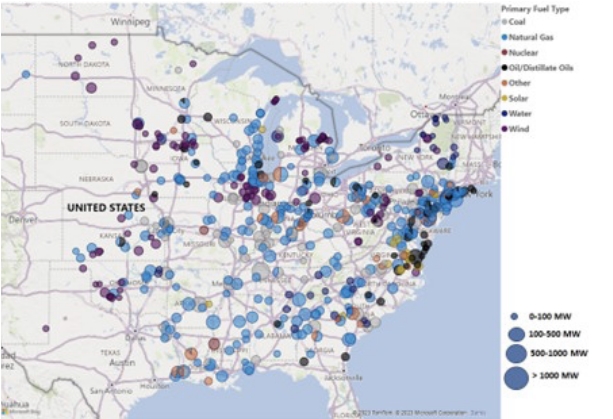 Figure 2: Location and Fuel Type of Unplanned Generation Outages and Derates During the Event (Bubble Size by MW for each Outage), as of December 24, 202 h/t AnotherIan *Was (doh) megawatts typo. Apologies. Image by ThankYouFantasyPictures
|
||||
|
Copyright © 2025 JoNova - All Rights Reserved |
||||



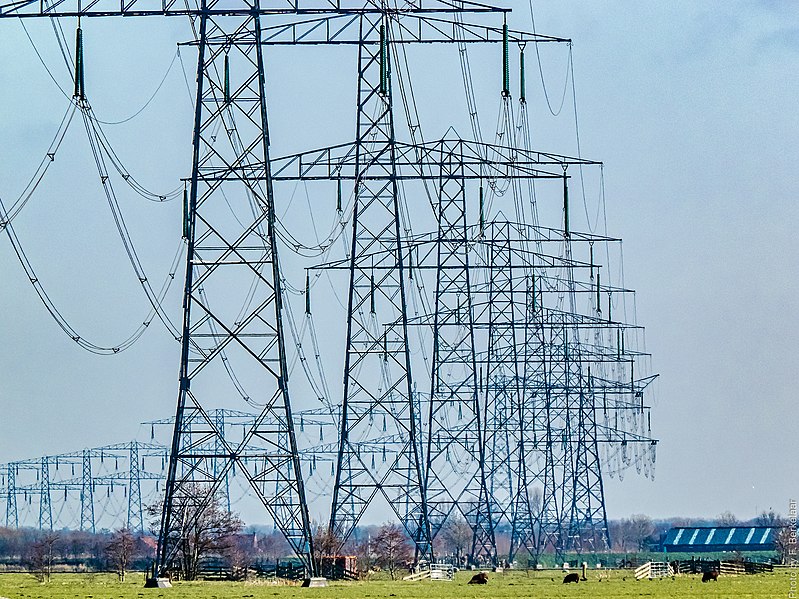
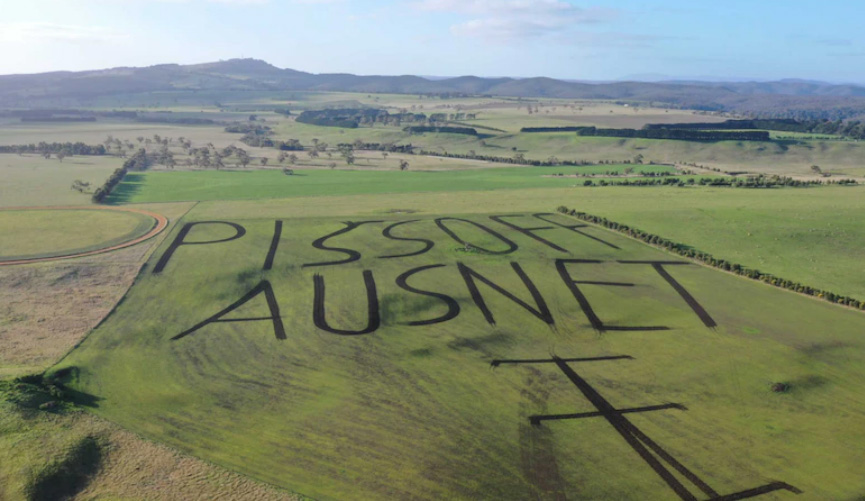

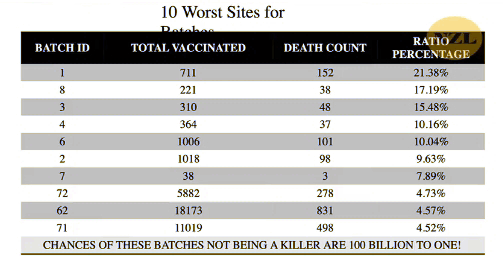
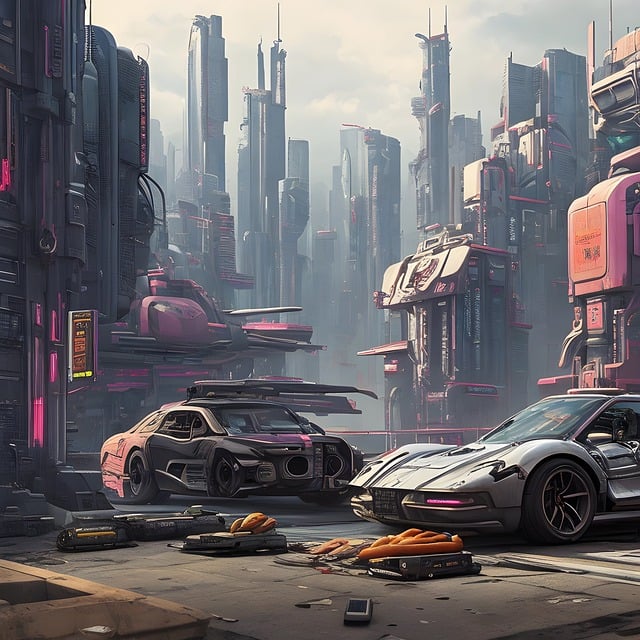

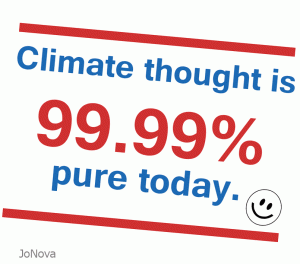



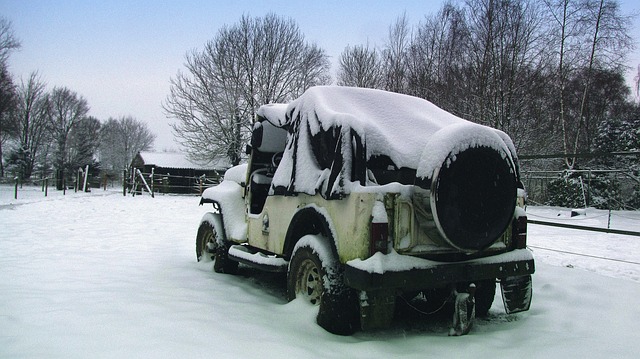







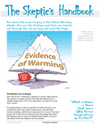

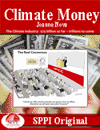




Recent Comments